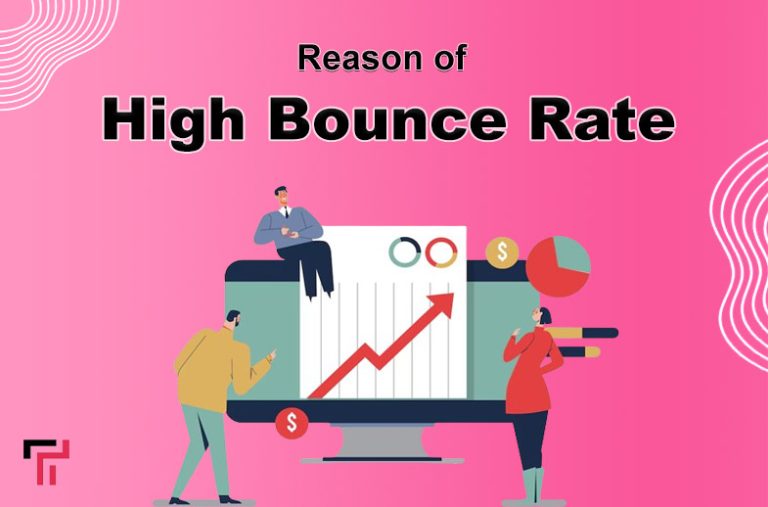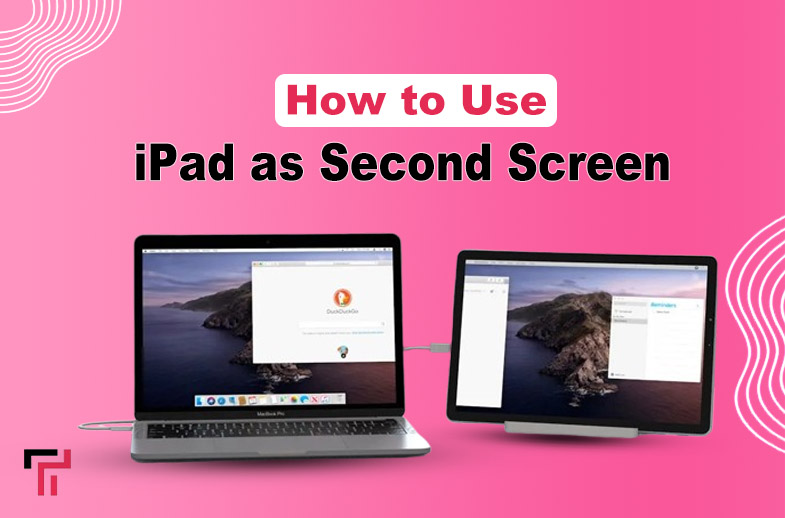A high bounce rate is a bad signal for website owners, indicating that the website is struggling to engage its visitors, resulting in a quick departure without further interaction or a successful outcome.
Finding the major causes of a high bounce rate is necessary for optimizing user experience, retaining visitors, and improving website stats. In this article, we have discussed seven common reasons behind the high bounce rate and solutions to reduce it.
If you want to optimize and maintain your website for higher rankings, check out our article How to Create a Website Maintenance Plan to improve your online presence.
Bounce Rate Explained
Bounce rate is the percentage of visitors who land on your website and then leave without visiting any other pages. In simpler words, it is the number of people who “bounce” away from your site after visiting a single page.

Reason Your Website Has a High Bounce Rate
There are several reasons behind the high bounce rate on a website, and some of those are listed below:
1. Poor Website Navigation
Effective and easier navigation is essential for ensuring users can quickly find what they need on your website. Otherwise, they may leave the site in frustration.
Common Website Navigation Issues
Broken Links: Broken links lead to error pages, damage your website, and increase the bounce rate. When a user clicks on a broken link, an error page appears that discourages visitors from handing out on your site.
Complicated Menus: Menus can be hidden and difficult to find, require too many clicks to access, and slow down user experience.
Lack of Clear Call to Action: CTAs are essential for directing visitors to your website. Without proper CTAs, the bounce rate can be increased.
How to Fix
Fix Broken Links: Check your site daily and fix every broken link using tools such as Google Search Console, which helps identify these issues.
Simplify Menus: Design your menus in a simple way using clear and concise labels and a logical structure, making it easy for visitors to find what they’re looking for.
Using Clear CTAs: Use prominent calls-to-action (CTAs) to direct visitors towards their upcoming steps, making sure buttons and links are highly visible and easy to grab, thereby encouraging conversions and driving user engagement.
2. Poor User Experience (UX) Design
An attractive design is essential for engaging visitors to keep them on your website. Instead, a poor UX design can lead to a confusing and frustrating experience, and cause visitors to leave your site instantly.
UX Design Issues
Slow Loading Times: Slow-loading pages impact user experience. Visitors always demand instantly loading websites and delays also cause a high bounce rate.
Cluttered Interface: A cluttered and disorganized layout can engage visitors, making it difficult for them to find the information they need.
Non-Responsive Layout: With increasing mobile use, a non-responsive website design can discourage mobile users, leading to a higher bounce rate.
How to Fix
Optimize Loading Times: Boost your website speed and performance by using the Google Page Speed Insight. Optimizing performance by comprehensive images leverages browser caching, and decreases HTTP requests for a lightning-fast website.
Simple Layout: Make sure that your website has clean and non-bugs layouts. To enhance readability, always use whitespace effectively to highlight important key factors.
Use Responsive Design: A responsive website design with flexible layouts and media queries ensures a consistent and optimal experience for all users, regardless of device or screen size.
3. Targeting The Wrong Audience
Attracting the right audience is essential for reducing the bounce rate. If your website is not reaching to the right audience, users lose interest and leave the website instantly.
Common Audience Targeting Issues
Manipulative Marketing: Targeting the wrong audience with manipulative marketing can cause a high bounce rate on websites.
Board Targeting: conveying your message too thin by trying to appeal to everyone can lead to a loss of focus, resulting in diminished interest and participation.
Inaccurate Audience Analysis: Not understanding your target audience’s needs and presence can result in irrelevant content and a high bounce rate.
How to Fix
Refine Your Market Strategy: Make sure that you are targeting your marketing tactics to affect your website to the right audience.
Focus on niche Marketing Make sure that your marketing efforts accurately reflect your website’s content target the right audience, and create personalized experiences that deeply and long-lasting relationships.
Analyze Target Audience: By using some tools including Google Analytics and social media. you can gain insights to understand your audience’s interests, demographics, and behaviors.
4. Lack of Visual Appeal
A visually appealing design is crucial for a positive first impression. A visually unappealing website fails to impress visitors, lead to an increased bounce rate, and lose the opportunity to engage with customers.
Web Design Issues
Low Color Contrast: Low contrast between text and background colors can make content difficult to read.
Poor Hierarchy: Without a clear hierarchy crucial elements can become overwhelmed, and the ability to navigate your site efficiently.
Lack of White Space: The lack of space in the design makes a sense of visual overload
How to Fix
Manage colors: Leverage the color contrast tool to make sure that text and background elements have sufficient contrast, applying a minimum ratio of 4.5:1 for standard text and 3:1 for larger text to guarantee clear legibility.
Establish Visual Hierarchy: Create a visual roadmap with strategic cues: size, color, and placement can guide the viewer’s attention and create a clear hierarchy
Manage White Space: Use white space to separate and organize content, images, and text, enhancing the readability and engaging the user’s intention through design.
5. Irrelevant and Low-Quality Content
Content is the power of any website. while irrelevant and low-quality content forces visitors to leave your website instantly.
Common Content Issues
Outdated Information: Sharing outdated and inaccurate information can damage your credibility and repel visitors, ultimately harming your online presence and reputation.
Clickbait Tiles: Incorrect headline titles that don’t match your content can lead to visitor disappointment, enabling them to rapidly leave your site and harm your site.
Lack of Value: Content that doesn’t meet visitors expectations or provide meaningful insights can lead to a quick departure and can result in a high bounce rate.
How to Fix
Keep Content Update: Create quality content and update your old content to ensure it is correct, relevant to the topic, and resonates with your audience.
Create Relevant Content: Make sure that your content aligns with the expectations set by your titles and meta descriptions. Focus on delivering the needs and interests of your target visitors.
Provide value: Always provide high-quality content that offers value to your visitors, by adding informative articles, helpful guides, and engaging multimedia.
6. Technical issues
A smooth-running website is essential for engaging users and protecting it from a high bounce rate. and it also impact on your audience
Common Technical Issues
Security concerns: Lack of security management in your website makes your audience doubtful and they leave your website quickly.
Broken Pages: Those pages that take time to load or may exhibit display errors irritate the audience and leave your page, leading to a high bounce rate.
Browser Compatibility issues: Test your website on different browsers and devices to ensure it works well everywhere.
How to Fix
Implements Security Measures: Keep your website secure and trustful by using HTTPS, installing SSL certificates, and daily updating your website regularly.
Regularly Test Your Website: Regularly scan your website to identify and fix broken pages, and links or deal with other technical errors.
Ensure browser Compatibility: Check your website on various browsers and devices to ensure it works perfectly and gives consistent performance.
7. Intrusive Ads and Pops-Ups
There is no doubt intrusive and Ads and pops generate revenue. they can also diminish the user experience and after that, it leads to a higher bounce rate if not implemented carefully.
Common issues with Intrusive Ads and Pops-Ups
Irrelevant Ads: Those ads that are not relevant to your content, can create a negative image in the audience’s minds.
Excessive Ads: Too many ads can overwhelm and repel visitors, harming the user experience.
Intrusive Pop-Ups: Full-screen or sudden pop-ups can be annoying, causing users to feel bombarded and forcing them to abandon your site.
How to Fix
Show Targeted Ads: Select Ads that resonate with your audience’s passions, requirements, and needs for building a more seamless and relevant experience.
Set Ads Limits: Always keep in mind that ads do not dominate your website, and keep a balanced ad placement with valuable content.
Use Non-Intrusive Pop-Ups: Always use those Pop-ups that appear at right moments and ensure they are easy to dismiss.
Final Words
A high bounce rate affects your website’s growth rate. However, understanding the cause behind it and implementing effective solutions can help you a lot in website engagement. Enhance your website overall by adjusting its design, navigation, content, advertisement strategies, and technical efficiency leading to more engaging and memorable experiences with your users.
Continuously monitor your website’s performance and collect feedback from users to identify areas for improvement. Through proactive optimizations and continuous enhancements, you can reduce bounce rates and drive the success of your websites.







